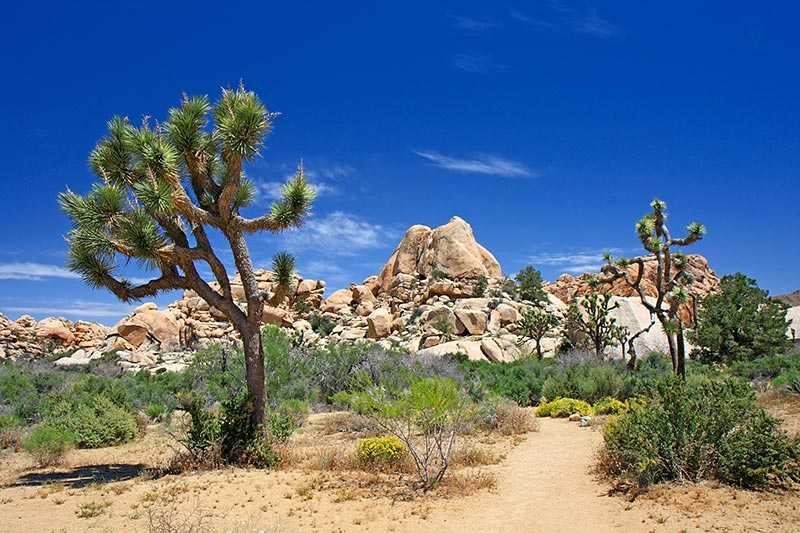The Joshua Tree

The distinctive and eye-catching looking Joshua Tree is a native to southwestern North America, and can be seen growing in the states of California, Arizona, Nevada and Utah, and particularly in the Mojave Desert. The tree gets its particular name from the mid-19th century Mormons who came upon it whilst crossing the desert, though it was long recognised by Native Americans as a useful material for construction and as food. Now it can be seen in full bloom in the Joshua Tree National Park of California, where visitors can hike and explore the spectacular landscape that is home to this stunning plant.
The Joshua Tree, Yucca Brevifolia, was named by Mormons in the 19th century, who saw a striking resemblance between its outstretched branches and the Biblical story of the prophet Joshua, raising his hands in prayer. Ranchers and miners, who used the thick trunks as material for fence construction, and to fuel steam engines, also recognised the usefulness of the fast growing tree that could be found across the desert. The benefits of the Joshua Tree were well known amongst local Native Americans too, who continue to value the plant for its nutritious seeds and flower buds, as well as using the tough and resilient outer leaves to weave sandals and baskets.
The tree thrives in the arid desert, growing fast to a height of a few metres. Many of the trees can be seen in full bloom during the spring, showing off large, cream-coloured flowers that give way to greenish brown, long, fibrous fruit. Blossoming depends on the trees getting enough water during the early spring rain, and only some of the trees across the desert bloom at any one time. Of these, only a few branches of a single tree might bloom, while others are left dry. The best place to see the trees in bloom is at higher elevations, where trees come to fruit over a slower period.
Though the Joshua Tree thrives in a difficult landscape, it has more recently had to tackle further environmental obstacles which have led to the species increasingly declining in number. The Joshua Tree’s blossoming relies upon a single species of moth, that has evolved alongside the plant, to pollinate its flowers. With increased pollution and climate change, the plants’ numbers have fallen rapidly in recent years, and the trees have little ability to migrate and adapt to new areas easily.
For now though, the Joshua Tree National Park is one of the key areas where this rare plant can be seen in all its glory. Located between Los Angeles and Las Vegas, the Joshua Tree National Park is an oasis of wilderness, and can be easily accessed by road, via Interstate 10 and Highway 62. While there is no public transport to the Park, the nearest airport is located close by at Palm Springs, where visitors can easily hire cars to explore the region and visit the area in scenic guided tours in and around the national park.